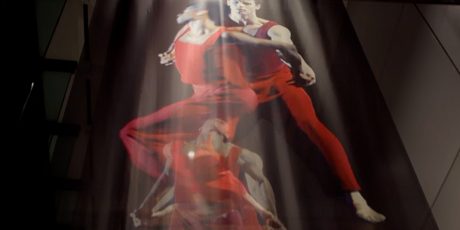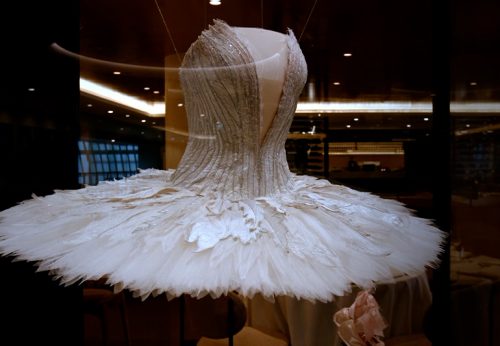
Adding a digital layer to the opera experience
This is a guest blog post by James Whitebread, Chief Technology Officer at the Royal Opera House.
Transformation, enabled by Cisco technology, empowers the Royal Opera House to extend its reach.
 The Royal Opera House is developing many new ways to engage with children and young people, schools, community groups, and families. To deliver this new approach we are developing a range of brilliant new initiatives that have a digital focus both in house and online. James Whitebread, chief technology officer at the Royal Opera House, explains how new, digital experiences can broaden the reach of fresh content and create new forms of engagement.
The Royal Opera House is developing many new ways to engage with children and young people, schools, community groups, and families. To deliver this new approach we are developing a range of brilliant new initiatives that have a digital focus both in house and online. James Whitebread, chief technology officer at the Royal Opera House, explains how new, digital experiences can broaden the reach of fresh content and create new forms of engagement.
The Royal Opera House is something of a misnomer. Yes, it’s home to the UK’s national opera company, but it is also much more than that. It is the base for the Royal Ballet, it has an in-house orchestra, shop, teaching spaces, and several bars, cafes, and restaurants. The main auditorium holds 2250 people. In addition, the Floral Hall hosts regular corporate events.
Located in Covent Garden, and with a Grade 1 listing, the building is stunning, highly public and in constant use. All of which can make material upgrades difficult to manage.

Ballet and opera have been performed on this site for nearly 300 years, what is the transformation opportunity?
Transformation can impact the entire organisation, from the visitor experience to the way the building is managed. It affects front of house and back of house, the physical and the digital. Transformation can create new revenue opportunities and new operational efficiencies.
The Royal Opera House is a very dynamic space – we welcome more than 1.5 million visitors a year and host hundreds of different events. Technology will enable us to react better to changes, and reach new audiences all around the world.
How might that impact the visitor experience?
No one decides to come to the opera because the building has great Wi-Fi, but we have to recognize the importance of the digital experience. For instance, digital can improve the ticketing experience, ordering food or drinks, or viewing an event guide.
Connectivity will also allow us to better understand the visitor experience. We will be able to see how visitors journey through the building, which services are popular, and the areas of the building that are most busy. This insight can improve the way we manage crowds and add new services or extra facilities.
Also, we are used as an event space by third parties. In that respect we are a network service provider. We need to provide a network that is secure, segmented, and with the appropriate bandwidth for each client.
And from an operational perspective?
The previous wired and wireless network was not great. For those working here, the immediate and most obvious impact of a network upgrade was better connectivity. This is a step-change. Better connectivity means mobile working and simpler collaboration. That can only benefit efficiency.
But there are more ambitious plans. We store many of our scenery, props, and costumes off-site, built up over many years, at a huge warehouse in Aberdare, Wales. We want to digitize every item in the warehouse. This means colleagues will be able to trace the exact location of the tiniest prop, they can upload orders or images direct to a tablet to be shared with teams here in London. It will make the whole logistics process slicker and more certain.
You mentioned earlier about reaching new audiences, what might this involve?
Essentially, we are in the business of content production. We stage live events each day, we also broadcast live events to cinemas and via video-on-demand. There is a huge opportunity to improve the quality and quantity of broadcast material. New content, packaged for different audiences, will allow us to extend the reach of the Royal Opera House.
We have cameras, lighting, and sound recording equipment throughout the building. Already, much of this equipment can be operated remotely, connected to the network. The new network will enable us to move high-definition content between editors and production teams far more efficiently. It will mean we can deploy new services to the broadcast space in the future.

Could you outline the role of the network?
Putting in a new fixed and wireless network is critical. Fundamentally, if we are to improve the visitor experience and our operational efficiency, we need a network that is reliable and stable.
This is an old building, and we need to be sympathetic in the work we carry out, but we recognize that the network will be key to the building’s future. We can better manage energy use, or maintenance, which is the fabric of the building.
Also, there is a security challenge. As our operations become more digital, we need to mitigate any security threat. We’ve done a lot of work over the last couple of years to strengthen the security of our digital perimeter. We also want to report on how we’re dealing with security threats.
And what is the role of Cisco?
This wasn’t just a network refresh, we wanted to change how we operated and managed the network. What impressed us with the Cisco approach was that it establishes real control over the network.
We went up to the Cisco office at Bedfont Lakes to see a proof of concept on Cisco DNA Center, Cisco Spaces, Cisco SD-Access, and Cisco Identity Services Engine (ISE). This helped validate some of the use cases. Plus, the whole package was wrapped up in a five-year Enterprise Agreement.
And why did you choose to partner with Telstra?
The Royal Opera House is a 24-hour, year-round operation. It was vital we partnered with a tier 1 technology company, someone experienced in working around the clock. We needed reliable support, collaborative working, and a clear understanding of the technology roadmap. That’s the approach we took to finding the right partners, and that’s what led us to Telstra and Cisco.
The network upgrade is not an overnight job. Telstra has spent a lot of time with us, they’ve been in the building almost every day, working on the design and planning the implementation. Right from the RFP and proof of concept stages, we’ve been impressed by Telstra’s depth of experience.



